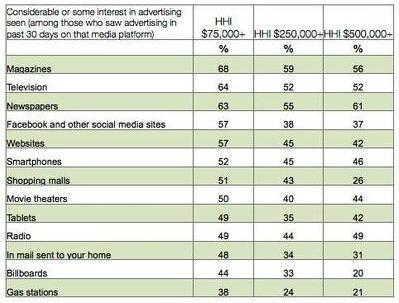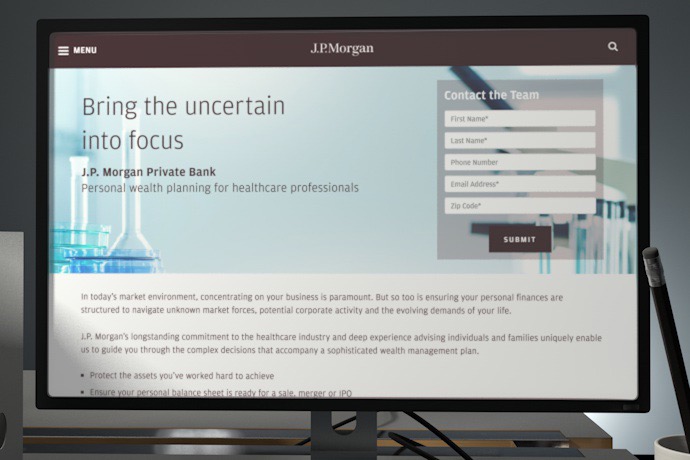Reaching the Affluent: Traditional Media or New Media? Answer – BOTH

This recent article on MediaPost serves as a good reminder that, when it comes to marketing to the affluent, channel mix and integration are critical. The following is a summary of key statistics that marketers who target the affluent segment should bear in mind:
- 90% of affluent Americans (those with a HHI of $100,000 or more) consume their news through printed magazines or newspapers.1
- According to a 2012 survey conducted by Ipsos MediaCT Mendelsohn:
- 24% of affluent consumers read at least one national newspaper (the Wall Street Journal, the New York Times, the Washington Post, etc.) on a daily basis.
- The affluent segment tends to listen to radio an average of 10.6 hours per week, more than the general population.
- Affluents consume just under 17 hours of television per week.
- Surprisingly, this segment’s high consumption of traditional media does not equate to lower use of online. In fact, affluent Americans use the Internet 19% more than the general population. 2
- 90% of affluents use social media; 44% use it to engage with financial institutions.3
- More than half own smartphones with 4.7 million having downloaded magazine apps and seven million having downloaded newspaper apps in the past year.4
Further, in a June 2013 survey conducted by MediaPost, affluent consumers were asked about their level of interest in advertising they saw/heard across several channels. While interest in advertising seen in digital media was high, the top channels driving interest consisted of traditional media (magazines, television, and newspapers).

Given the lack of channel preference (or more accurately, media consumption that runs the gamut of channels) within this segment, marketers who continue to opt for an integrated, multi-channel approach when marketing to the affluent segment will be most successful.
1According to a 2011 survey conducted by AdAge
2According to according to an infographic distributed by Column Five Media
3According to a LinkedIn study highlighted by Business Insider
4According to a May 2013 article by Examiner.com






